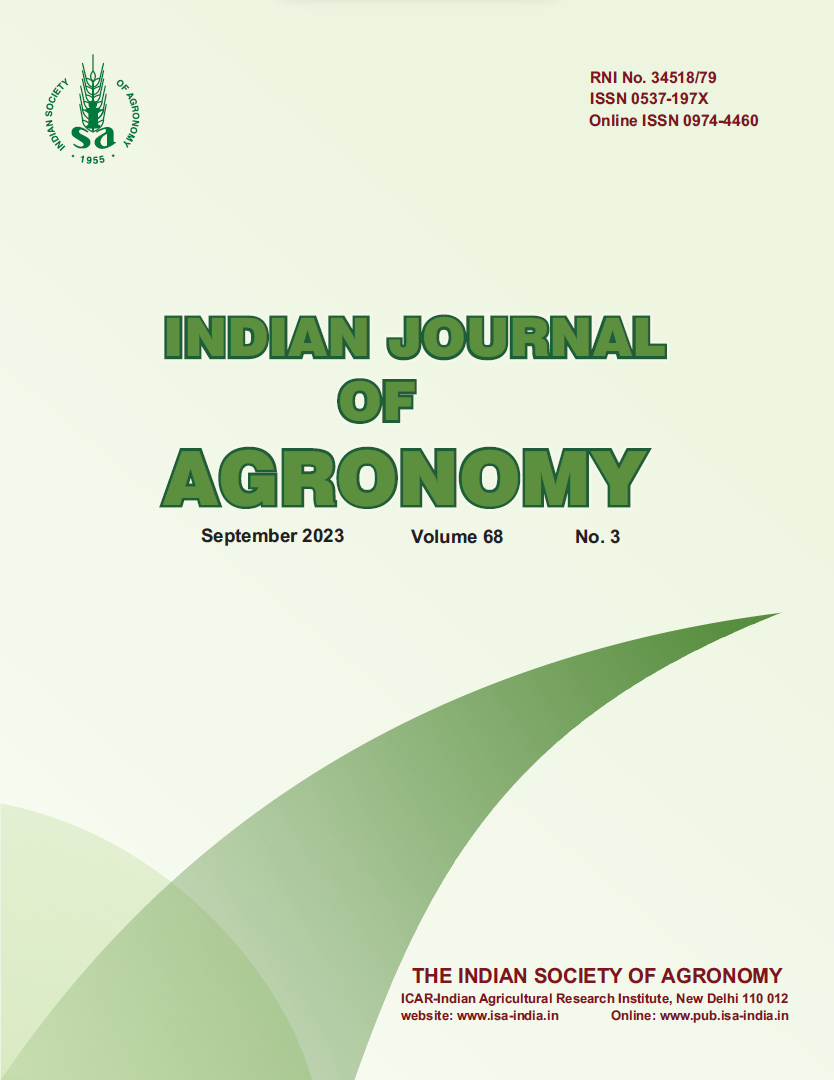Utilization of thermal indices for production of nutri-cereals in non-traditional areas of Bihar
DOI:
https://doi.org/10.59797/ija.v68i3.2808Keywords:
Agro-meteorological indices, Crop productivity, Heat-use efficiency, Nutri-cerealAbstract
An experiment was conducted during summer seasons of 2017 and 2018 on clay-loam soil of the ICAR-Research Complex for Eastern Region, Patna, Bihar, to study the performance of different nutri-cereals and their heat-unit requirements to complete their phenological cycles. Significantly higher grain yield, i.e. 1.92, 1.76 and 1.53 t/ha, was achieved in barnyard millet (Echinochloa esculenta (A. Braun) H. Scholz) followed by sorghum [Sorghum bicolor (L.) Moench] and pearl millet [Pennisetum glaucum (L.) R. Br.], respectively. Whereas the higher straw and biological yields were observed in sorghum (8.91 and 10.8 t/ha), pearl millet (7.14 and 8.67 t/ha) and little millet (Panicum sumatrense Roth ex Roem. & Schult.) (5.50 and 6.67 t/ha). Barnyard millet also showed the maximum crop productivity (24 kg/ha/day). Remarkably higher biomass productivity was noted in sorghum (114.7 kg/ha/day), followed by pearl millet and little millet (96.3 and 85.5 kg/ha/day). Pearl millet (702.9°C-day) accumulated the minimum growing degree-days (GDD) to attain 50% flowering. Further, pearl millet (4,111. 4°C day-hr) being at par with proso-millet (Panicum miliaceum L.) (4,280.3°C day-hr) and little millet (4,295.7°C day hr) attained significantly lower heliothermal units (HTU) to reach 50% flowering. Barnyard millet (1.25 kg/ha °C-day), followed by sorghum and pearl millet (1.01 and 0.91 kg/ha °C-day) acquired considerably higher HUE for grain production. Sorghum (6.11 kg/ha °C-day) followed by pearl millet (5.17 kg/ha °C-day) and little millet (4.48 kg/ha °Cday) captured significantly maximum HUE for biomass production. Our results indicated that, cultivation of nutri-cereals such as barnyard millet, sorghum, pearl millet and little millet is a viable option to utilize the fallow period (summer season) for achieving the nutritional security and realizing the livelihood improvement in this region.






